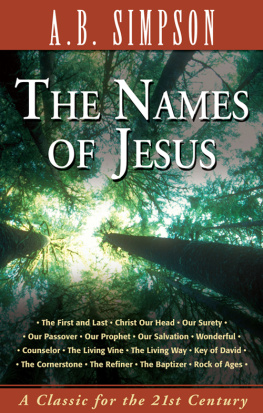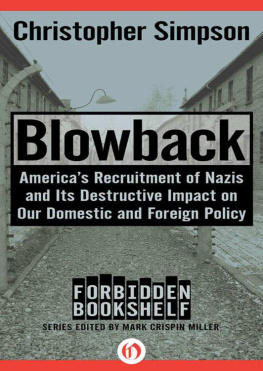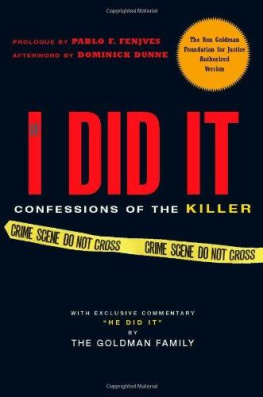THE EDITOR'S PREFACE.
The late Sir James Simpson, in the midst of his anxious professional labours, was wont to seek for refreshment in the pursuit of subjects of a historical and archological character, and to publish the results in the Transactions of different Societies and in scientific journals.
Some of these papers are now scarce, and difficult of access; and a desire having been expressed in various quarters for their appearance in a collected and permanent form, I was consulted on the subject by Sir Walter Simpson, who put into my hands copies of the various essays, with notes on some of them by his father, which seemed to indicate that he himself had contemplated their republication.
Having for a long time been acquainted with their merits, I did not hesitate to express a strong opinion in favour of their publication; and I accepted with pleasure the duty of editing them, which Sir Walter requested me to perform.
The papers in question were the fruit of inquiries begun indeed as a relief from weightier cares; but as it was not in their author's nature to rest satisfied with desultory and superficial results in his treatment of any subject, so his archological papers more resemble the exhaustive treatises of a leisurely student, than the occasional efforts of one overwhelmed in professional occupations.
In the present work will be found all the more important archological papers of Sir James Simpson, collected from the various sources indicated in the Table of Contents.
The subjects to the antiquities of which Sir James first directed his attention were connected with his own profession; but, as time went on, his interest in historical pursuits deepened and expanded, and the questions discussed by him became more varied.
It has been thought best to arrange the papers of a general historical scope in the first volume, and those connected with professional antiquities in the second; but readers, who may wish to trace the order in which they were written by the author, will find their various dates in the Table.
The first paper, entitled "Archology, its Past and its Future Work," was prepared as a lecture to the Society of Antiquaries of Scotland. This was done with a care and elaboration which are not always associated with such efforts; and, whether in indicating the object and end of the archological student's pursuits,sketching the past progress of the study,and specifying the lines of research from which Scottish inductive archology may be expected to derive additional data and facts,nothing more thoroughly practical could be desired; while in his resum of the difficulties and enigmas peculiar to Scottish antiquities, he may be said to have left none of them untouched, his passing allusions being, in many instances, suggestive of their solution.
The paper on "An old Stone-roofed Cell or Oratory in the Island of Inchcolm" affords an instance of the author's careful observation, and his fertility of illustration. The humble structure in question, which, at the time when it first attracted Sir James Simpson's notice, was used as a pig-stye, had few external features to suggest the necessity of farther inquiry; but after his eye had become accustomed to the architecture of the early monastic cells in Ireland, its real character flashed upon him, and he found that his conclusions coincided with the facts of the early history of the island.
These he gleaned from many sources, but in grouping them into a picture he enriched his narrative with various instructive notes; as on the "Mos Scotticum" of our early buildings; a comparison of the ruin with the Irish oratories; notices of other Island Retreats of Saints, and of the Saints themselves. In one of these he gives an instructive reference to a passage in the original Latin text of Boece about the round tower of Brechin, which had been overlooked by his translator Bellenden, and so was now quoted for the first time.
A copy of this paper on Inchcolm having been sent to his friend Dr. Petrie of Dublin, author of the well-known essay on the "Early Ecclesiastical Architecture and Round Towers of Ireland," it was returned after a time, enriched with many notes and illustrations. In now reprinting the paper these have been added, and are distinguished from the author's notes by having the letter P annexed to them. The subject of the Inchcolm oratory was one about which this great man felt much interest, and on which he could speak from the abundance of his knowledge and experience. The notes are therefore of special value, as furnishing the latest views of the author on mooted points of Celtic Ecclesiology, while they are conspicuous for the modesty and candour which were combined with Dr. Petrie's vast learning on the subject.
Thus, in his work on the Round Towers, Dr. Petrie assigned "about the year 1020" as the date of the round tower of Brechin, but in one of the notes he corrects himself, and explains the origin of his mistake:"The recollection of the error which I made, by a carelessness not in such matters usual with me, in assigning this date 1020, instead of between the years 971 and 994, as I ought to have done, has long given me annoyance, and a lesson never to trust to memory in dates; for it was thus I fell into the mistake. I had the year 1020 on my mind, which is the year assigned by Pinkerton for the writing of the Chron. Pictorum, and, without stopping to remember or to refer, I took it for granted that it was the year of Kenneth's death, or rather of his gift."
In writing of the Early Churches or Oratories of Ireland, Dr. Petrie stated in his Essay"they had a single doorway always placed in the centre of the west wall." In one of his notes, now printed, he thus qualifies the statement:"I should perhaps have written almost always. The very few exceptions did not at the moment occur to me." Again, Sir James Simpson having quoted a passage from Dr. Petrie's work, in which the writer ascribes the old small stone-roofed church at Killaloe to the seventh century, Dr. Petrie, in his relative note, adds"but now considers as of the tenth, or perhaps eleventh."
To the paper on "Leprosy and Leper Hospitals in Scotland and England" is now added a series of additional "Historical Notices," prepared by Dr. Joseph Robertson, with the accuracy and research for which, as is well known, my early friend was conspicuous.
The origin of the tract on "Medical Officers in the Roman Army" is explained in the following note, prefixed to the first edition:"A few years ago my late colleague, Sir George Ballingall, asked me'Was the Roman Army provided with Medical Officers?' He was interested in the subject as Professor of Military Surgery, and told me that he had made, quite unsuccessfully, inquiries on the matter in various quarters, and at various persons. I drew up for him a few remarks, which were privately printed and circulated among his class at the time. The present essay consists of an extension of these remarks."
The essay on the monument called " The Catstane " suggested an explanation, which naturally elicited divergent criticisms. Some of these appear to have occasionally engaged Sir James Simpson's attention; and from some unfinished notes among his papers, it seems plain that he meant to notice them in an additional communication to the Society of Antiquaries.








![Kyle Simpson [Kyle Simpson] - You Don’t Know JS: Up & Going](/uploads/posts/book/121420/thumbs/kyle-simpson-kyle-simpson-you-don-t-know-js.jpg)

